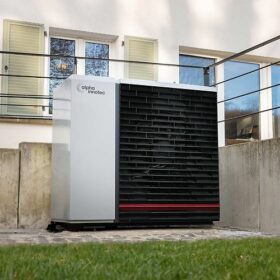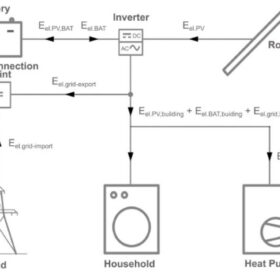Solar-assisted heat pumps vs. air-source heat pumps
A group of researchers in Iran has analyzed the coefficient of performance and the energy consumption of a solar-assisted heat pumps and an air-source heat pumps and has found that three factors are crucial to determine their annual performance – irradiance changes, ambient temperature, and wind speed.
Coupling heat pumps with roll-bonded photovoltaic-thermal collectors
Researchers in Sweden have analyzed how roll-bonded PVT collectors can act as secondary heat sources in ground-source heat pumps and have found they provide a better performance than conventional PVT panels. Their techno-economic analysis also showed roll-bonded PVT systems can be up to 9% more expensive than conventional installations based on sheet and tube absorbers.
Johnson Controls releases new residential heat pump series
The new heat pumps use R-454B as a refrigerant and are specifically designed to be matched with Johnson Controls’ residential gas furnaces. Their size ranges from 1.5 tons to 5 tons and their coefficient of performance (COP) spans between 3.24 and 3.40, according to the manufacturer.
EcoFlow unveils air-to-water heat pump, PV-powered water heater
EcoFlow has launched a new air-to-water heat pump for residential applications. The new product, equipped with R290 refrigerant, is available in 9 kW and 20 kW versions. The US-headquartered manufacturer has also developed a new smart immersion heater, which uses surplus solar energy to heat up water. It is compatible with all available rooftop PV systems.
Alpha Innotec launches new residential heat pumps
The German manufacturer said the new air-to-water systems are part of its Hybrox series. Their coefficient of performance is between 4.3 and 5.3 and their size ranges from 11 kW to 16 kW.
PV-powered heat pumps outperform solar thermal-driven counterparts in densely populated areas
New research from Germany showed that PV-powered heat pumps could require less surface than their solar thermal-driven counterparts in district heating networks. The scientists also found that increasing energy prices would have a minimal impact on the viability of both concepts.
Johnson Controls unveils new residential heat pump series
The new heat pumps use R-454B as a refrigerant and have a size ranging from 2 tons to 5 tons. Their coefficient of performance (COP) ranges between 3.24 and 3.40, according to the manufacturer.
Daikin presents modular water-to-water heat pumps
The Japanese manufacturer said its new heat pump line features a modular approach to system design. The new products are available with capacities of 100 kW, 125 kW and 160 kW and can reportedly achieve a water output temperature of 60 C.
Residential heat pumps linked to solar-plus-storage achieve higher seasonal performance factor
Researchers at Germany’s Frauhofer ISE have analyzed the performance of a residential heat pump connected to a rooftop PV system relying on battery storage and have found that this combination significantly improves the performance of the heat pump while also increasing considerably the solar array’s self-consumption rate.
Daikin debuts residential air-to-air heat pump
The Japanese manufacturer claims the new product has a seasonal energy efficiency ratio of up to 9.47 and a seasonal coefficient of performance of up to 5.20.










